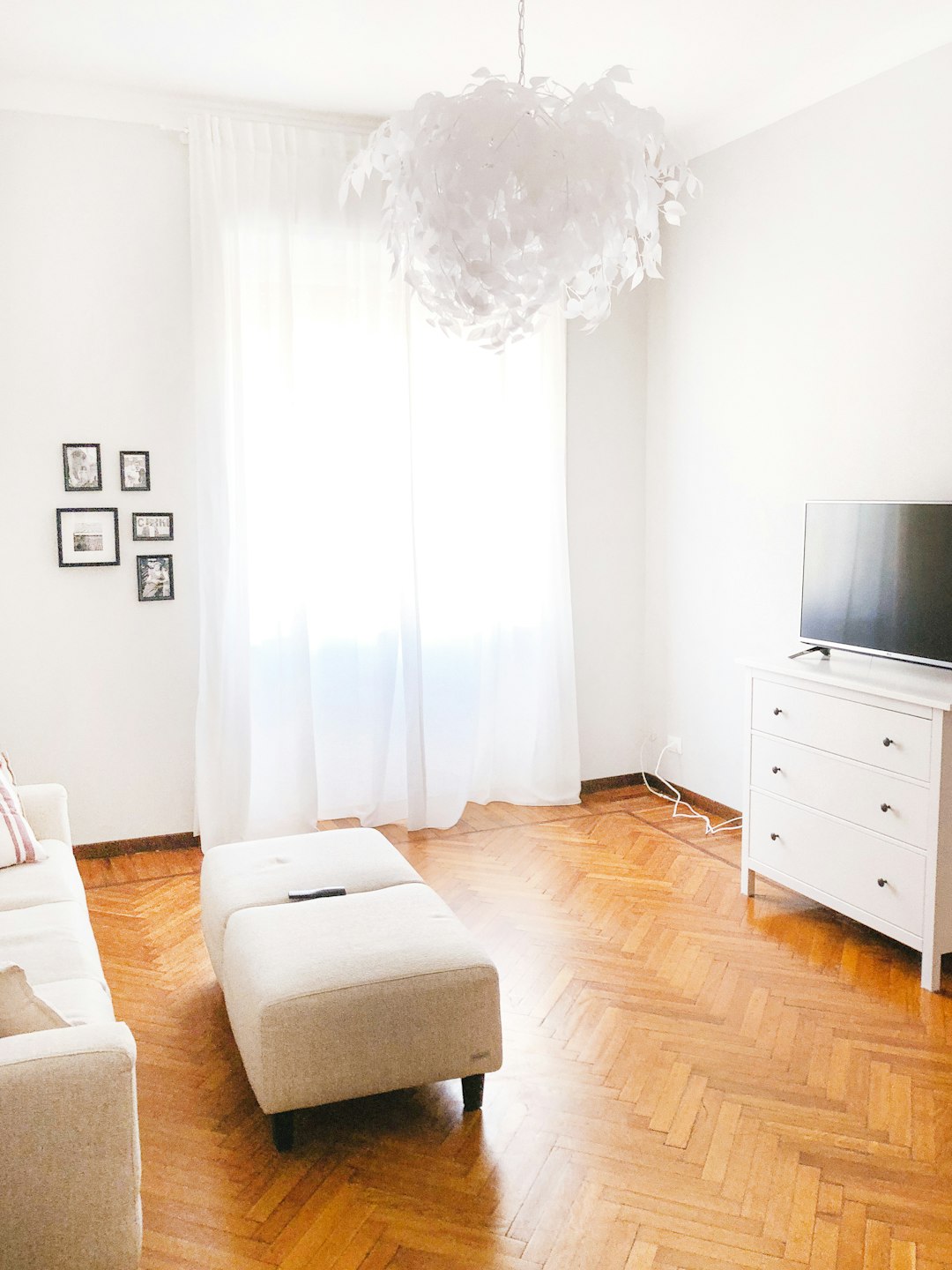Support our educational content for free when you purchase through links on our site. Learn more
The World’s Quietest Room Hallucinations [2023]
Have you ever wondered what it would be like to step into the quietest room in the world? A room so silent that it can make you hear your own heartbeat and even experience hallucinations? Well, you’re in for a treat! In this article, we will explore the fascinating world of the quietest room and the hallucinations that can occur within its walls. So, buckle up and get ready for a mind-blowing journey into the realm of silence!
Table of Contents
- Quick Answer
- Quick Tips and Facts
- Background
- The Hallucinatory Experience
- What Happens in the World’s Quietest Room
- The Creepiness Factor
- How Long Can You Stay in the Quietest Room
- FAQ
- Conclusion
- Recommended Links
- Reference Links
Quick Answer
The world’s quietest room, located at Orfield Laboratories in Minneapolis, holds the Guinness World Record for being the quietest place on earth. With an average sound level of -9 decibels, this room is 99.99 percent sound absorbent. Spending more than 30 minutes in this room can lead to hallucinations, as the absence of external noise allows you to hear your internal bodily functions. However, the experience can be unsettling for some individuals.
CHECK PRICE on: Amazon | Walmart | eBay
Quick Tips and Facts
Before we dive deeper into the world of the quietest room hallucinations, here are some quick tips and facts to pique your interest:
✅ The world’s quietest room is located at Orfield Laboratories in Minneapolis.
✅ It holds the Guinness World Record for being the quietest place on earth.
✅ The room has an average sound level of -9 decibels, compared to the average quiet room with a sound level of 30 decibels.
✅ Spending more than 30 minutes in the room can lead to hallucinations.
✅ The absence of external noise allows you to hear your internal bodily functions.
✅ The experience of being in the quietest room can be unsettling for some individuals.
✅ No subject has spent more than 45 minutes in the room.
Now that we have covered the basics, let’s delve into the background of the world’s quietest room and its fascinating history.
Background
The world’s quietest room, located at Orfield Laboratories in Minneapolis, is a marvel of acoustic engineering. Designed to minimize external noise and create an environment of absolute silence, this room has captured the imagination of people from all walks of life. But what led to the creation of such a unique space?
The idea of creating an anechoic chamber, a room designed to absorb all sound and electromagnetic waves, dates back to the early 20th century. Scientists and engineers were intrigued by the possibility of studying sound in a controlled environment, free from external interference. Over the years, advancements in acoustic technology and materials made it possible to create the world’s quietest room.
The construction of the quietest room involved the use of specialized materials, such as foam wedges and fiberglass, to absorb sound waves. The walls, floor, and ceiling of the room are covered with these materials, creating an environment that is 99.99 percent sound absorbent. The result is a room with an average sound level of -9 decibels, which is significantly lower than the average quiet room.
Now that we have a better understanding of the background, let’s explore the hallucinatory experience that can occur within the world’s quietest room.
The Hallucinatory Experience
Spending time in the world’s quietest room can be a surreal and mind-altering experience. As the external noise is eliminated, your senses become heightened, and you start to notice sounds that are usually drowned out by the hustle and bustle of everyday life. This heightened awareness can lead to a phenomenon known as auditory hallucinations.
Auditory hallucinations occur when you perceive sounds that are not actually present in your environment. In the case of the quietest room, the absence of external noise allows you to hear your internal bodily functions, such as your heartbeat, blood flow, and even the movement of your muscles. These sounds, which are usually masked by external noise, can become amplified and distorted in the silence of the room.
The hallucinatory experience can vary from person to person. Some individuals may find it fascinating and revel in the opportunity to explore the inner workings of their bodies. Others, however, may find it unsettling and even terrifying. The sudden realization of the constant activity happening within your own body can be overwhelming for some.
What Happens in the World’s Quietest Room
So, what exactly happens when you step into the world’s quietest room? Let’s take a closer look at the unique experiences that await you:
-
Heightened Sensory Perception: As soon as you enter the room, you will notice a dramatic change in your perception of sound. The absence of external noise allows you to hear even the faintest sounds, such as your own breathing and the rustling of your clothes. This heightened sensory perception can be both fascinating and disorienting.
-
Auditory Hallucinations: As mentioned earlier, spending more than 30 minutes in the room can lead to auditory hallucinations. You may start to hear sounds that are not actually present in your environment, such as buzzing, humming, or even whispers. These hallucinations are a result of your brain trying to make sense of the absence of external noise.
-
Unsettling Silence: While some people find the silence of the room peaceful and serene, others may find it unsettling. The complete absence of external noise can create a sense of isolation and unease. It can also make you acutely aware of your own thoughts and emotions, which can be a confronting experience for some.
-
Heightened Focus: The quietest room offers a unique opportunity for deep introspection and meditation. With no external distractions, you can fully immerse yourself in your thoughts and explore the depths of your mind. This heightened focus can lead to moments of clarity and self-discovery.
The Creepiness Factor
It’s no secret that the world’s quietest room can be a creepy place. The combination of absolute silence, auditory hallucinations, and heightened sensory perception can create an eerie atmosphere that is both fascinating and unsettling. But what exactly makes the quietest room so creepy?
One factor that contributes to the creepiness is the dissonance between our expectations and reality. We are so accustomed to a world filled with noise that the absence of it can feel unnatural and unsettling. The sudden realization that our own bodies are constantly producing sounds can be a jarring experience.
Another factor is the amplification and distortion of internal bodily sounds. When we hear our heartbeat or the movement of our muscles, it can create a sense of unease. These sounds are usually masked by external noise, so hearing them in their raw form can be disconcerting.
Lastly, the isolation and silence of the room can evoke feelings of vulnerability and claustrophobia. The absence of external stimuli can make us acutely aware of our own presence and mortality. It’s a stark reminder of our own insignificance in the grand scheme of things.
How Long Can You Stay in the Quietest Room
While the world’s quietest room offers a unique and fascinating experience, it’s important to note that spending too much time in the room can have adverse effects on your mental well-being. No subject has spent more than 45 minutes in the room, and for good reason.
Extended periods of time in the quietest room can lead to sensory deprivation, which can have negative psychological effects. Sensory deprivation occurs when your senses are deprived of external stimuli for an extended period of time. This can lead to feelings of anxiety, disorientation, and even hallucinations.
If you do decide to visit the quietest room, it’s recommended to limit your stay to around 30 minutes. This will allow you to experience the unique sensations and auditory hallucinations without putting your mental well-being at risk. It’s also important to listen to your body and leave the room if you start to feel uncomfortable or overwhelmed.
FAQ
Why do you hallucinate in a quiet room?
Hallucinations can occur in a quiet room due to the absence of external noise. When your brain is deprived of sensory input, it starts to create its own stimuli to fill the void. This can result in auditory hallucinations, where you perceive sounds that are not actually present in your environment.
What happens if you go in the world’s quietest room?
When you enter the world’s quietest room, you will experience a dramatic change in your perception of sound. The absence of external noise allows you to hear even the faintest sounds, such as your own breathing and the movement of your muscles. Spending more than 30 minutes in the room can lead to auditory hallucinations, as your brain tries to make sense of the absence of external noise.
Read more about “The Quietest Place on Earth: A Comprehensive Guide …”
What happens if you stay in an anechoic chamber for too long?
Staying in an anechoic chamber, such as the world’s quietest room, for too long can have adverse effects on your mental well-being. Extended periods of time in the chamber can lead to sensory deprivation, which can result in feelings of anxiety, disorientation, and even hallucinations. It’s recommended to limit your stay to around 30 minutes to avoid these negative effects.
What makes the world’s quietest room so creepy?
The world’s quietest room can be creepy due to the dissonance between our expectations and reality. We are so accustomed to a world filled with noise that the absence of it can feel unnatural and unsettling. The amplification and distortion of internal bodily sounds, such as the heartbeat and muscle movement, can also contribute to the creepiness factor. Lastly, the isolation and silence of the room can evoke feelings of vulnerability and claustrophobia.
Conclusion
In conclusion, the world’s quietest room offers a unique and mind-altering experience. Spending time in this room can lead to auditory hallucinations and a heightened awareness of your internal bodily functions. While the experience can be fascinating for some, it can also be unsettling for others. It’s important to listen to your body and limit your stay to around 30 minutes to avoid any negative effects on your mental well-being.
If you’re curious to explore the world of silence further, check out our other articles on Quietest™, such as The Quietest Place on Earth: A Comprehensive Guide 2023. And remember, silence can be both a friend and a foe, so embrace it with caution!
Recommended Links
- Quiet Home Appliances
- Quiet Electronics
- Silent Technology
- Noise Reduction Tips
- The Quietest Place on Earth: A Comprehensive Guide 2023
CHECK PRICE on: Amazon | Walmart | eBay



